Surface ships against the aircraft. World War II
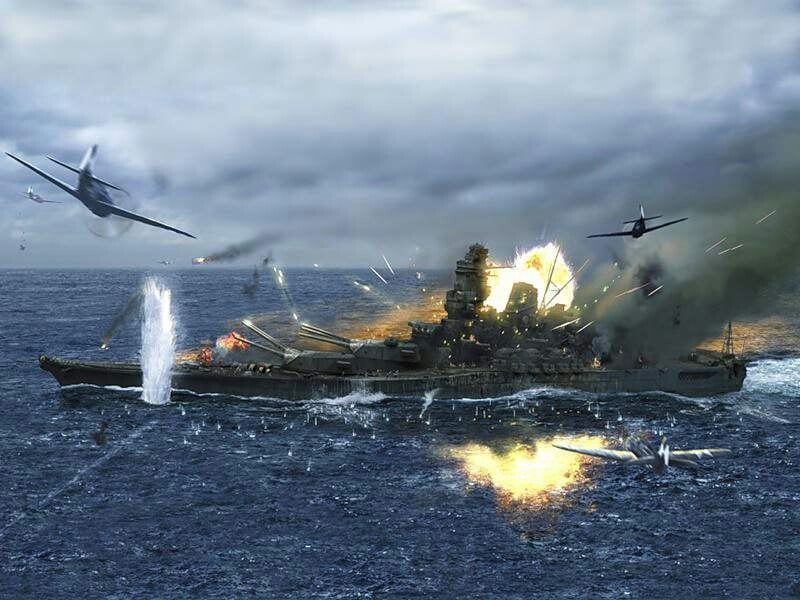
What is the problem with these two statements?
That is a lie: in World War II, everything was not so. And even it was a little on the contrary. Moreover - now it is also not so. And also rather the opposite.
The idea that large surface ships are not able to survive in areas where the enemy’s attack aircraft are working intensively (even though the base aviation, even the deck one, without difference) looks beautiful and fascinates. And there is a certain amount of truth in it. And sometimes it is. Here are just actual evidence, sufficient to consider this idea to be true in all cases - does not exist. And never existed. “Sometimes” and “always” are two very different concepts.
Let's figure it out.
Historical example 1. Worker-Peasant Red Fleet of the USSR against the Luftwaffe
For obvious reasons, it is necessary to begin with domestic combat experience. Because the domestic combat experience was formed under the influence of such unshakable things as "geography", for example. Yes, and the "players" around the same, and sometimes they form painfully familiar from the textbook stories alliances. Therefore, it is worth starting the study of historical experience with the Great Patriotic War.
The analysis of the reasons why our ships died in the war was made long and exhaustively, however, man - and this applies not only to our people, this is generally the case - is not always able to draw the right conclusions even from the "chewed" material. We have to do them for him and give them in finished form. But, in fairness - if the conclusions are correct, then there is nothing to worry about.
Of all the Soviet fleets during the Great Patriotic War, the Black Sea Fleet was the most brutally opposed to German aviation. This was due to the nature of the fighting at sea - from fleet it was necessary to ensure the protection of convoys and transports, to carry out military transportation on their own in the face of enemy aircraft, and to carry out landing operations to help the army. The Navy did all this, with varying success. A feature of the requirements for the fleet in these operations was that warships needed to systematically enter the German strike aircraft area and be there for quite a long time, repelling attacks from the air on their own. It will not go deep into the shortcomings of the Black Sea Fleet’s combat work - there were a huge number of them.
Consider how the results of the battles between the Luftwaffe and the Soviet large surface ships looked like.
During the war years, the Germans managed to sink eleven large (or conditionally large, such as Novik-class EMs, for example) ships — destroyers, leaders, large Minzags, and including one light cruiser.
Under what circumstances could they do this?
We're watching.
- EM "Frunze" (type "Novik"). Sunk in the sea 21 September 1941, hit 9-ti bombers. He lay in drift, rescued by the crew of the sunk gunboat “Krasnaya Armenia”.
- CRL "Chervona Ukraine" (type "Svetlana"). 21 November sunk 1941 in the port of Sevastopol. Being in the base, he beat off multiple attacks of large aviation forces, received extensive damage, lost speed and buoyancy. The crew led a long struggle for survivability, was later removed from the ship.
- Minzag "Ostrovsky" (former trading vessel). 23 March sunk 1942, in Tuapse, stood at the pier.
- EM "Free (pr. 7-y). 10 June 1942, sunk in a parking lot in Sevastopol.
- EM "Flawless" (ex. 7). 26 June 1942, attacked at sea on the move 20-th bombers, received several direct hits with bombs, sank.
- Leader "Tashkent". 28 sunk on June 1942 of the year. Received damage during the transition under massive air strikes (approximately 90 German planes dropped bombs near 300, strikes continued all daylight hours), with the help of other ships in tow came to Novorossiysk, died during a massive (64 bomber for the whole naval base) German strike aviation on the naval base Novorossiysk, at the time of drowning was anchored in the database.
- EM "Vigilant" (Ave. 7). 2 July 1942 was sunk by an air strike while anchored in Novorossiysk Bay.
- Minzag "Comintern" (before conversion, cruiser type "Bogatyr"). 16 July 1942 during a German air attack was seriously damaged in a parking lot in Poti, later disbanded and flooded. Subject to repair, but due to the loss of bases on the Black Sea, repair was not possible. Prior to this, he was repeatedly subjected to attacks from the air at sea on the move, fought back to 10 raids per day, maintained combat capability for damage caused by bombs falling.
- EM "Merciless" (pr.7). 6 was sunk on October 1943 in the course of a massive air strike at sea, the hike was organized and passed with a lot of errors of commanders at all levels.
- Leader "Kharkov". 6 was sunk on October 1943 in the course of a massive air strike at sea, the hike was organized and passed with a lot of errors of commanders at all levels.
- EM "Able." 6 was sunk on October 1943 of the year, together with the EM "Merciless" and the leader "Kharkov", the campaign was organized and passed with a lot of mistakes of commanders at all levels. The commander of "Capable" instead of removing the crews from sinking ships engaged in towing under air strikes, lost the time required to exit from the blow, which resulted in the destruction of the ship. In fact, he could easily get away from the blow.
The last three cases resulted in a ban on bets on large ships at sea.
How many ships, the commanders of which did not make obvious mistakes in planning the march, were sunk by German aircraft at sea and on the move?
ONE. Squadron "Impeccable".
During the entire long, intense and brutal war on the Black Sea, the Germans were able to sink only one warship on the sea, whose combat expedition was properly organized, and the commander did not make obvious nonsense.
And if you count all the drowned on the go and at sea, then four. All the rest were captured in a stationary state in the bases, and most often with extensive combat damage, which, however, did not lead to their death (at sea).
From this point of view, the Stakes order looks at least strange - in the bases it was more dangerous, at least until German aircraft could reach them. For the sake of security, it was necessary to throw all undercarriage "edinichki" into battle - to cut German communications at sea, to disrupt the evacuation of parts of the 17 Army from the Crimea. But our military-political leadership with the strategy at sea was not at odds even then, and it turned out how it happened.
For the rest, until the end of 1943, cruisers and destroyers of the Black Sea Fleet staged artillery attacks on German troops on the coast, transported troops and refugees, delivered landing units to the designated landing areas for landing craft, sometimes under fire in ports, crushing coastal artillery and constantly fought off attacks from the air.
On the cruiser "Red Crimea" was dropped about 2000 bombs. The ship repulsed more than two hundred attacks from the air. Served until 1952 year.
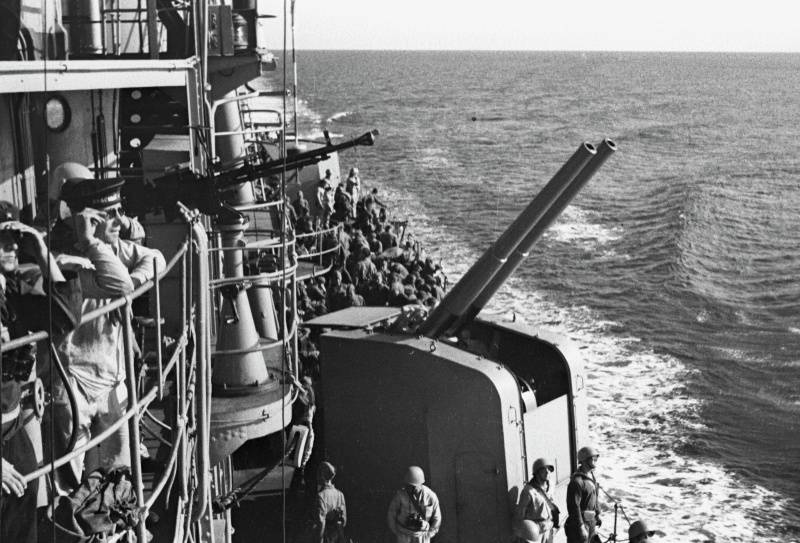
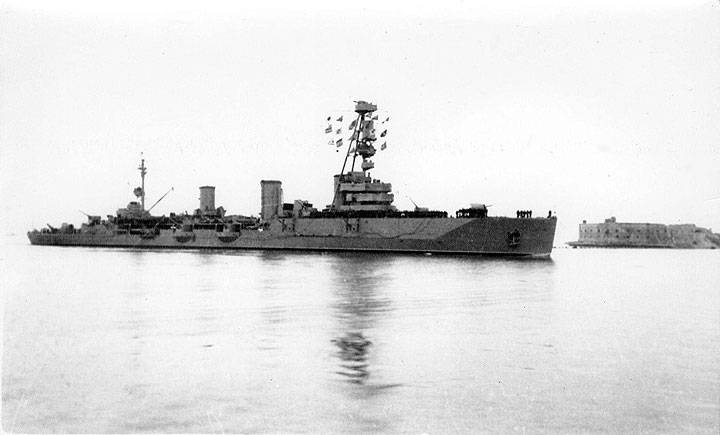
The cruiser “Red Caucasus” is almost the same, some figures differ.
Almost every warship of the Black Sea Fleet had its own list of downed German bombers, albeit a short one.
Take, for example, the oldest of the sunken warships - Minzag "Comintern", the former cruiser "Cahul" of the type "Bogatyr". 9 March 1942 escorts from Novorossiysk to Sevastopol, Germans discover a convoy and March 10 convoy has to repel 10 air attacks, March 11 convoy comes to Sevastopol without a loss, and there the Comintern receives a direct bomb hit with serious damage and personal losses composition, while the combat capability of the ship is not lost and the Germans in the attack lose two aircraft. After that, the “old man”, launched as early as 1902, goes back to Novorossiysk.
And so - all the major ships of the Black Sea Fleet. Dozens of times throughout the war, many dozens. Trekking, repulsed air attacks, regularly shot down by German aircraft.
The experience of the war on the Black Sea unequivocally showed that the destruction of a large high-speed surface ship on the move at sea by tactical strike aircraft is an incredibly difficult task, fraught with, firstly, a huge expenditure of ammunition, and secondly it is also dangerous for the attacker - the ship can be very painful snap back At the same time, the chances for its successful implementation are minimal.
Even more than that, in a battle between the limited aviation forces and a surface ship, on the Black Sea in 1941-1943, the surface ship, as a rule, defeated. This is a historical fact.
But in the base of the ship is vulnerable. Firstly, it stands, and secondly, it is surrounded by terrain with characteristic landmarks and sometimes difficult terrain, which facilitates an attack for aviation. But the bases are not so simple. In those days, when the Germans managed to sink “Chervona Ukraine,” the “Red Crimea” was hiding in Sevastopol and did not get it. And on the Baltic, the Germans (largely by chance) “got” Marat, but the “October Revolution” failed. Nevertheless, the vulnerability of ships at sea is important - and it is low, at least, our combat experience speaks precisely about this.
Why is it important for us the fact of sinking exactly at sea on the move to assess the military stability of NK attacked by aviation? Because the ship performs combat missions precisely on the move and at sea. And it is on the move and at sea you need to evaluate its combat capability, including under air attack.
But maybe these are some features of the Eastern Front? Maybe the western experience is talking about something else?
Not. Does not speak.
Historical example 2. Kriegsmarine vs. Western Allies
The German defeat of the war at sea is a well-known fact. As well as those adverse conditions in which their surface fleet had to act.
The enemy of the Germans, Britain, dominated the sea. The British at the start of the war had seven aircraft carriers and carrier-based aircraft. It is necessary to say that it is very outdated, but in the absence of the enemy’s own aircraft over the sea, even outdated aviation can in theory become an infinitely significant thing. So it turned out in the end?
And again - no. Destroyers omit, they rarely went on long hikes against the Royal Navy, but the larger ships list. To some, this will seem dishonest, because in the Soviet fleet we considered them large enough to be considered. But here such a thing - what fleet, such and "large". Who does not like the technique, they can recount in their own way.
So, we take a list of two Bismarck class battleships (Bismarck and Tirpitz), a pair of Scharnhorst class battleships (Scharnhorst and Gneisenau), pocket battleships (Deutschland, Admiral Count Spee, " Admiral Scheer "), heavy cruisers" Blucher "," Admiral Hipper "," Prince Eugen "and smaller cruisers" Karlsruhe "," Cologne "," Konigsberg "," Emden "," Leipzig "and" Nürnberg ".
What do we see from this? If we reject those ships that survived the war and surrendered, then among the dead again only one ship, to the death of which aviation was involved, and which, at the same time, would have died on the move and at sea - the Bismarck. All the others either died for reasons not related to aviation, or were bombed in bases, and the same Tirpitz, for example, from the 14 th attempt.
Moreover, Bismarck is again a specific example.
Firstly, if Lyutens did not give the same radiogram that issued it, and, having shown more responsibility, would act according to the situation and independently, it is not at all the fact that the battleship would be caught by the “British”. And when they still “caught” him, the aircraft only damaged the ship, and did not sink it, the Bismarck even kept the course, and if the British were not near the surface forces, the ship could have either left or made an adversary to pay for its drowning in multiple lives.
So how much did Kriegsmarine lose large surface ships at sea on the move from the actions of enemy aircraft?
ONE.
Moreover, one “with a stretch”, together with other forces, whose “contribution” to the destruction of the ship was at least comparable to that of aviation. From 1939 to 1945 years.
And what conclusions can be drawn from this? The conclusions are obvious and they have already been made for the Soviet fleet. However, we will come back to the conclusions.
And now we go over the ocean.
Historical example 3. War in the Pacific
It is rather difficult to single out any significant episodes in the war, where more than eight hundred units were used alone of the landing craft. The US TF38 / 58 “our money” carrier link would have to be called something like the “Carrier Fleet Group”. The scale of the use of carrier-based aviation in that war was unprecedented. Unprecedented is literally - this has never happened before, and, most importantly, this will never happen again. No other country in the world will create a fleet with dozens of heavy strike aircraft carriers and hundreds of light and escort ships. It is no longer possible.
It is possible to single out episodes from giant fights that confirm or disprove something. But the scale will lead to the fact that it will be possible to simply “shovel to row” examples for any of the points of view.
Therefore, let us turn to statistics.
So, we use the data of JANAC - the General Committee of the Army and Navy, which had the task of examining the losses inflicted during the war on the enemy, the losses of Japanese warships and merchant ships with a "breakdown" according to the forces by which these losses were inflicted.
And this “breakdown” looks like this.
In total, the US sank 611 combat Japanese ship of all classes (except for submarines, the study on them took place "in another department").
Of them sunk:
US Navy Submarines - 201
Surface Ships - 112
Army Aviation - 70
Basic Naval Aviation - 20
Deck Naval Aviation - 161
Coastal Artillery - 2
Blown up by mines - 19
Destroyed by “other aircraft and agents” (whatever that means) - 26
What is the conclusion? And the conclusion is simple: in the presence of the carrier fleet, when the aircraft carriers are the main combat ships and perform the main tasks, and at the same time in conditions of an extremely intensive air war waged by the basic aircraft against the Japanese fleet (both army and navy), aircraft of all types have sunk fewer ships than surface ships and submarines. And less than half of the ships that the US drowned in general.
And this is in conditions when the opposing side also massively had aircraft carriers that themselves could lift the aircraft into the air, which deprived the “ship against aircraft” experiment of the necessary “purity”, so to speak.
Aviation was, of course, the main striking force in the war in the Pacific Ocean, but it was not she who caused the main losses to the enemy’s surface forces. Paradox, but it is.
And this is the same fact as dozens of flights of the “Red Crimea” under air strikes. Irrefutable.
There is one more example. Battleships
Historical example 4. Loss of battleships in the sea from air strikes
Interestingly, the view that the battleship was squeezed with light by airplanes still dominates the minds. Nevertheless, it is worth assessing the reality, namely, how many total battleships were destroyed by airplanes on the move into the sea? For the "weight" we will add more battlecruisers here, let them also be in the "rating".
1. "Bismarck" (Germany) - as already mentioned, not quite a "clean" example. But we shall.
2. The Prince of Wales (Britain) is the notorious Battle of Kuantan, one of the alleged proofs of the inability of surface ships to survive under air strikes.
3. RIPALS (battlecruiser, not a battleship, Britain) - at the same time. We will return to this example.
4. Hiei (Japan). An example is even less “clean” than the “Bismarck” - the ship was seriously damaged and almost completely lost its combat capability even before the air strike, moreover, it sank not from the effects of an air attack, it was flooded by its own after further use of the ship turned out to be impossible due to damage. But the aircraft contributed to its sinking, so again we count.
5. Roma (Italy). The battleship was sunk by yesterday’s allies after the crew decided to surrender, moreover, the newest weapon, against which the Italians had no means - a guided planning bomb. That is, here is an example of the use by the Germans of technical equipment belonging to another technological era.
6. Musashi (Japan). A “clean” example, but also with one reservation, about which later.
7. Yamato (Japan). The ship, on the one hand, was specifically sent by the command to death in order to divert American aircraft, on the other hand, the number of aircraft thrown at its sinking was as unprecedented as the number of the US aircraft carrier fleet. No one has ever before or after that thrown and will not attack a small group of ships (in fact, on one strike ship with an escort) 368 with first-class attack planes from 11-ti (!) Aircraft carriers. Never. So that example is still, but oh well.
Total Behind the aircraft completely and unconditionally - "Prince of Wales", "Republics" and "Musashi".
Again, the Ripals were an outdated ship virtually devoid of air defense weapons, he had only two 76-mm cannons and that was all. This is zero.
For comparison: at the KRL "Red Crimea", theoretically not comparable with the "Ripals" ship "a few classes lower" was:
- 100 mm anti-aircraft guns - 3;
- 45-mm semi-automatic guns - 4;
- 37-mm anti-aircraft guns - 10;
- 12,7 mm quad machine gun installations - 2;
- 12,7 mm machine guns - 4.
In an amicable way, “Ripals” would be excluded from the “rating”, but he died in one battle with a real battleship, with “Prince of Wales”, and in a sign battle, so leave, but with the proviso that it was a floating target, but not a full-fledged warship.
Next, returning to our unconditional episodes - in fact, these are two fights from the entire Second World War. And in both cases, huge aviation forces were thrown at the ships, especially at Musashi. Thus, behind the aircraft there are two “clean” fights, both in the form of pre-planned attacks on one or two ships by very large forces, moreover at intervals of 2 of the year and ten months.
And - controversial episodes. "Bismarck" about which everything is already said above. “Hiei”, which, perhaps, would have drowned without air attacks. "Roma", faced with the fact that yesterday's ally used super-weapon. The Yamato, which the command sent to the death, and the enemy literally fell asleep with bombs and torpedoes in such quantities that it will not be repeated by anyone ever. An example that does not prove anything really.
And that's all. These are all battleships sunk by airplanes, on the go at sea. Seven ships in six battles, of which the aircraft single-handedly resolved the issue only in four, of which one was the unexpected use of the newest weapon, and in the second the battleship itself went on a suicide. And yes, “Ripals” is still not a battleship, there was one battleship in that battle.
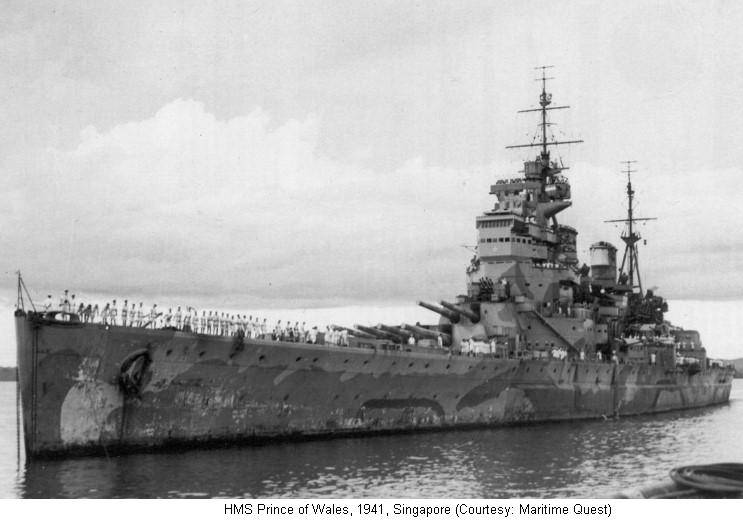
And, since everything is known in comparison, we will see how much of all the battleships were sunk during the war.
Answer: together with the ships mentioned - fourteen. It turns out that the aircraft destroyed only half, and to be honest, of the fourteen battleships and the "Ripals" (he is also on this list), five "were" sunk by "pure" aircraft, including the not having air defense "Ripals", "Roma" and deliberately substituted Yamato strike.
Somehow it looks weak from the outside. And it does not look at all in comparison with how many battleships the opposing sides have entered into battle.
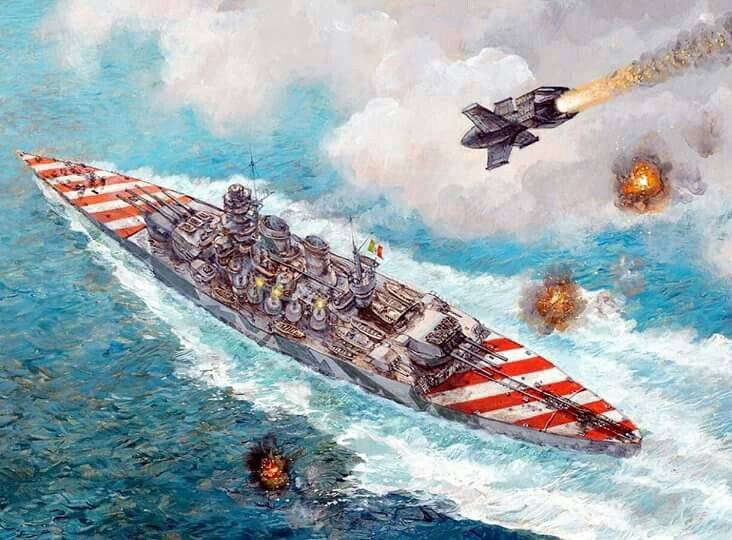
However, in the action movie "battleship against air strikes," there are also reverse examples. It was the American battleships that during the war in the Pacific Ocean were the “shield” that defended ship formations from Japanese aircraft. Equipped with radar and a large number of rapid-fire cannons in caliber from 20 to 127 mm, high-speed and armored battleships played the same role in that war, which, after a few decades, the URO ships with the AEGIS system would perform. They will beat off thousands of Japanese aviation attacks - from base bombers and torpedo bombers to "live RCC" - airplanes, guided by "kamikaze". They will get hit, shoot down enemy planes, walk to the enemy shore to conduct shelling, conduct artillery battles with surface ships at sea ... and not one will be sunk.
Very revealing.
In fairness it is worth noting those who "spoils the statistics" - the British destroyers. That's who aviation crumbled, so crumbled. But, here again, specific moments - the Britons often climbed to the place where it was precisely the large aviation forces that were waiting for them, for example, during the German capture of Crete. Who climbs on the rampage, he eventually gets sooner or later, there is nothing to be done.
As for the losses of American destroyers, after deducting the kamikaze attacks, which were also a sudden innovation for the allies, they, for the most part, did not die from airplanes.
Hack and predictor Aviator
A sober analysis of the confrontation between surface ships and airplanes in World War II speaks about this.
In cases where a single surface ship or a small group of surface ships (for example, the Prince of Wales and Ripals under Kuantan) encounters large, well-trained aviation forces that purposefully carry out a large-scale operation aimed at the destruction of these particular ships, there is no chance . The ship is slow and the planes that did not destroy it the first time will then return again and again, and with each attack, the ship will be less and less able to resist - unless of course it is sunk at all immediately.
There are a lot of examples, and this is not only the battle of Kuantan, this is the loss of the British during the evacuation of troops from Crete, this is our “black day” of October 6, 1943 of the year, and much more. Actually, from a non-critical analysis of such episodes, concepts are born that surface ships "have become outdated for a long time."
But in cases when a single ship or group operating in the zone of enemy domination in the air, they retain the surprise of their actions, they act according to a clear plan that allows using all the flaws of aviation as a combat vehicle (using the time of day and weather, taking into account the reaction time of aviation to the detected combat ship when planning an operation and choosing points for changing course, masking when entering the bases, high speed at the transition and unpredictable maneuvering, choosing an unexpected course for reconnaissance of the enemy after any contact with his forces, not only with aircraft), have a strong anti-aircraft weapons and trained crew, to maintain discipline when using the radio, have everything you need on board to lead the struggle for survival right in the battle, and after him - the situation is reversed. Small-scale aerial reconnaissance forces are generally powerless to harm such a ship, as are the duty attack squadrons alerted upon its detection.
Even the mistress says that in the overwhelming number of cases when such “prepared” surface ships entered into hostile waters, they won fights against aviation. The same Black Sea fleet is quite an example, because every ship, even a dead one, first TENS 10 times went where the Luftwaffe could act and act freely.
This is exactly what the correct conclusions are about what we should learn from the experience of WWII. This does not detract from the role of naval aviation, it does not reduce its danger for surface ships, and especially for supply vessels, it does not cancel its ability to destroy absolutely any ship if necessary, or a group of ships.
But it shows well that it has a limit of possibilities in the first place, and that in order to succeed it needs to create a huge superiority in forces over the enemy in the second place. Or a lot of luck. What is not always possible.
And the experience of WWII lucidly tells us that ships in the bases are just targets. Taranto, Pearl Harbor, German raids on our bases on the Black and Baltic Seas, the sinking of German ships - from the Tirpitz to some light cruiser, the sinking of our aircraft, Niobe - everything speaks about this. The ship in the base is in a much more dangerous position than a ship at sea. We must not forget this.
Surface ships may well fight in the absence of dominance in the air of their aircraft, they may well fight in the presence of enemy aircraft in the sky, and even sometimes in conditions where it dominates the air - at least locally. Their possibilities, of course, also have a limit. But still it is necessary to reach this limit. Or rather - it is not necessary to reach him.
But maybe something has changed in modern times? After all, we are so smart, we have ZGRLS, we have rockets, the planes are now supersonic ... in modern times, it’s not like in the old days, right?
Not true.
To be continued ...
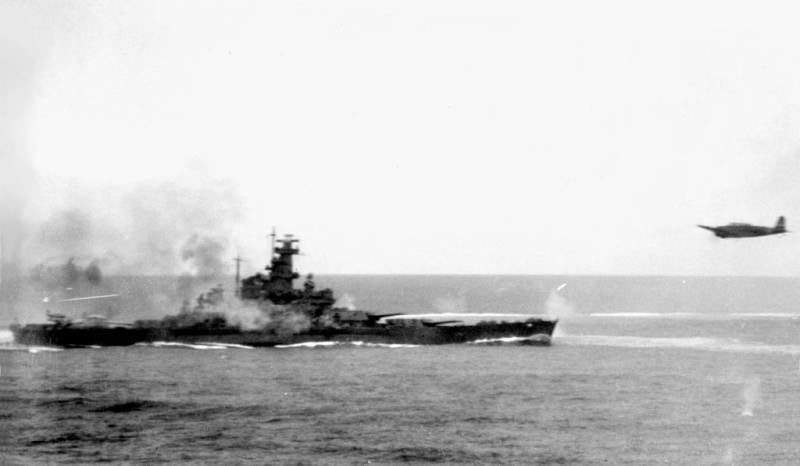
Information